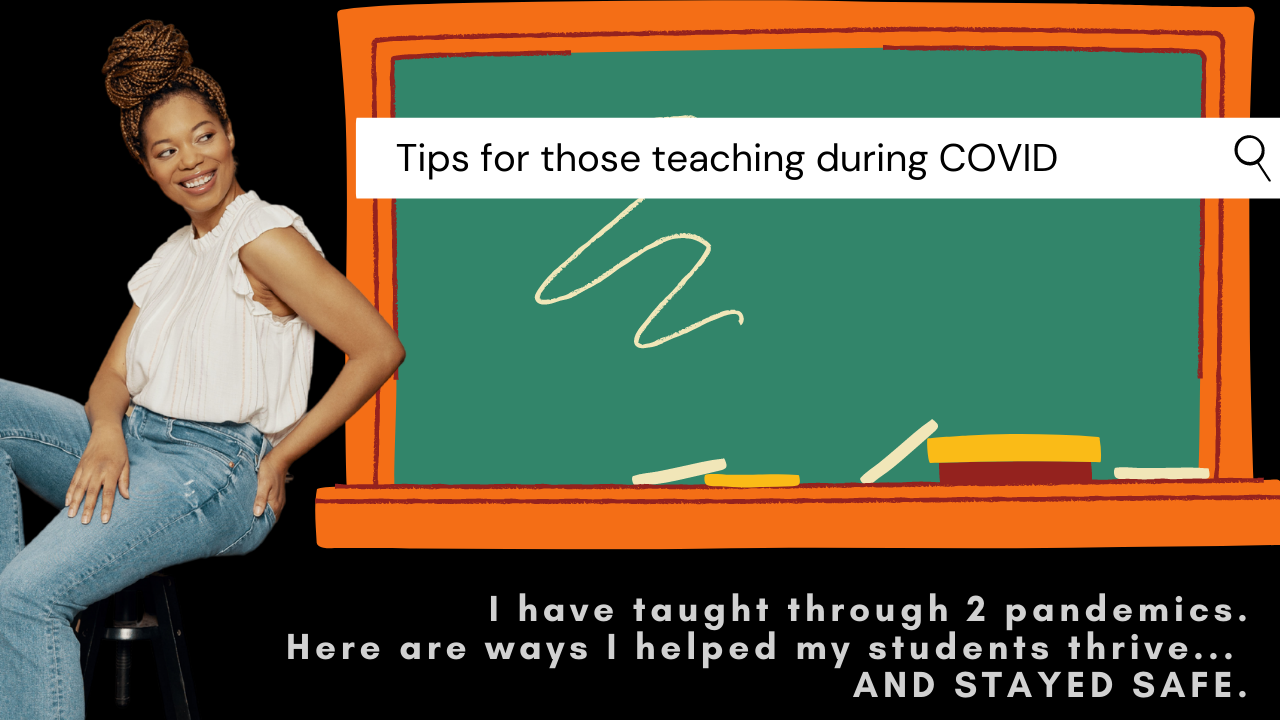TIPS for those teaching during COVID

I began sharing my experiences from teaching in 2 pandemics a few months ago before many educators knew whether or not they would be returning to school.
Now, most educators have begun teaching already or decided not to return. There are cases popping up in schools and in some spaces, teachers are just confused about what to do.
It is my aim to offer emotional support and examples of what can be done in the classroom, or online, from someone who has actually done these things. These images are from my classroom (With permission) and experiences are from 2009 and 2015, when I taught through H1N1 and MERS.
Below are a few tips for teaching during COVID:

Talk about health in class.
Talk about what is happening.
Kids are coming in with all sorts of beliefs about what is happening. One big part of this was really explaining what a pandemic was, what we knew about the virus, and what we didn't know. Then, we decided how we would act as a class. For example, we wouldn't freak out if someone coughed because people cough for different reasons.

Model HOW to be healthy.
There are always parents who will send their kids to school sick. So, I made the students Health Ambassadors, so they would be aware and tell me themselves.
- I brought in plastic wipeable dolls and taught them about fevers, and symptoms of the virus. (Through a fun learning lense .)
- Everyone had a WHO task each day- like keeping desks clean, watering plants for fresh air, checking the lunch menu to make sure it was healthy (and identify what was not), making sure everyone had a mask (even if they chose not to wear it), etc.

Become EXTRA mindful of your tone and energy.
When you're wearing a mask, children cannot see if you are smiling or not. Also, even without a mask, there is heightened stress during a pandemic.
This is hard. I learned to present extra energy in my voice. I would try to make sure my voice sounded like I was smiling.
Also, if I had to repeat myself several times, I would sing my statements to avoid frustration being apparent. It made a difference.

Increase Non-physical connection.
We all need connection. Trust me, that moment when your young student cries and you can't hug them...is enough to push you to get creative. Below are ways I found to provide my students with connection and a sense of "normalcy" during pandemics.
The air hug:
This is best performed in a seated position to avoid your students from running into your arms. (Sigh...I know.)
The self hugs:
"Do you want to hug, Jamie? Okay, let's all hug ourselves and send hug power to Jamie! Wow! Jamie, did you feel it?"
The worry doll:
I had my students bring their favorite stuffed animal.
(I brought extras for students who didn't have any.)
They could hug their animals when sad. Every morning, I would say, "I gave your bestie a hug to give you from me." Then, they would hug it. Everyone's worry doll had a name. I learned their names.

That's it for today!
Remember: Pandemics don't last forever.
We will get through this.

